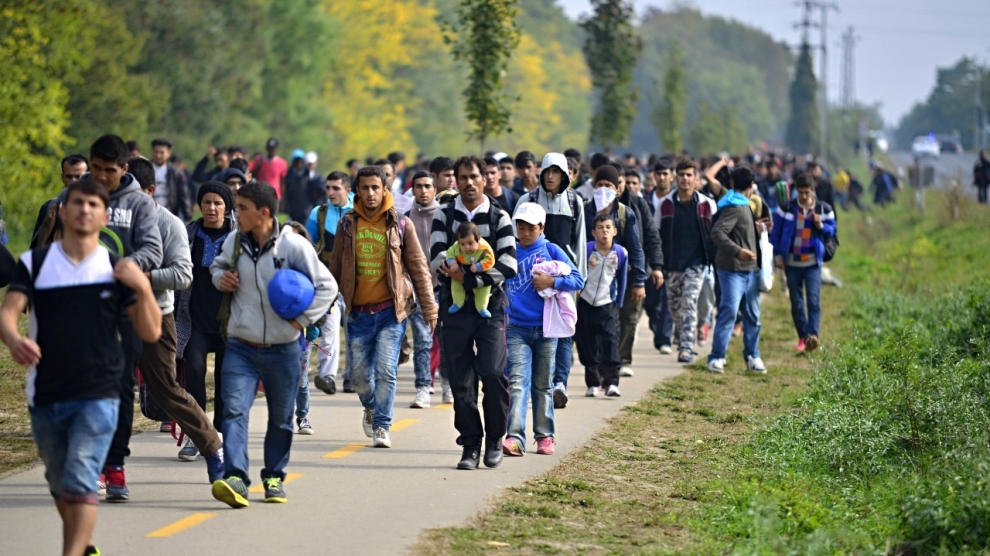International Migrants Day 2020: Covid-19 hits migrants hard

OECD says that immigrants are potentially in a more vulnerable position in labour market due to their generally less stable employment conditions
A report by the International Organisation of Migration, a body of the United Nations that looks at international migration issues, says that migrants face a much higher risk of Covid-19 infection than the natives due to a variety of reasons such as a higher incidence of poverty, overcrowded housing conditions and high concentration in jobs where physical distancing is nearly impossible to maintain. Studies in a number of OECD countries found an infection risk that is at least twice as high as that of the native-born.
According to report from various countries, there is a significant over-representation of immigrants in Covid-19 infection rates. For instance, among the confirmed cases in Norway, 31 pc are foreign-born (mainly from countries with a high share of humanitarian emigrants), almost twice as much as their share among the population. In Sweden, the situation was no different with 32 pc of cases being immigrants (against 19 pc in the population) as well as in Denmark, where immigrants from lower-income countries and their native-born children account for 18 pc of the infected, twice as many as their share in the Danish population.
According to the Estudo Instituto Saude Publica in Portugal, 24 pc of Covid‑19 infections in Lisbon are immigrants (mainly from Africa); while foreign-born represent around 11 pc of the population of the Capital-City Metropolitan area. Outside Europe, immigrants are also disproportionately affected by Covid‑19. For instance, in Ontario, Canada, permanent immigrants accounted for 43.5 pc of cases, while they account for 25 pc of its population.
In the United Kingdom, one third of patients critically ill were registered as BAME (Black Asian and Minority Ethnic) as of while they made up only 22 pc of the British population. Data from the British Office for National Statistics (ONS) shows that the age-adjusted mortality rate from Covid‑19 was 0.26 pc for Black males, 0.19 pc for Bangladeshi or Pakistani, 0.16 pc for Indians, and 0.09 pc for Whites.
In the United States, the Center for Disease Control and Prevention (CDC) estimates say that 41 pc of all Covid‑19 adjusted deaths involved Hispanic people. The expected percentage based on their population share, again adjusted for age and geographical distribution, was 33 pc. Higher mortality from Covid‑19 compared with their white peers affected all groups among the black population but only the working age population among Hispanics. Minorities in the United States are not only affected by higher Covid‑19 mortality overall, this also holds after controlling for pre-existing health conditions and other demographic and socio-economic factors.
Just as the Black and Hispanic minorities in the United States or the British-Asian population in the United Kingdom, migrants have registered higher Covid-19 related mortality rates than the native population. Covid-19 related deaths were reported in camps, including in Bangladesh and in immigration centres in the United States of America. People living in camp-like settings such as densely populated urban slums, informal settlements, or communal dormitories also face increased health risks due to the lack of or limited civic facilities, inadequate health infrastructure and the difficulty of practicing physical distancing.
In addition, the IOM says that a number of cases of xenophobia, discrimination and stigmatisation have been reported from across the world. In some incidents, migrants were not allowed to enter hotels nor access supermarkets and restaurants or have been evicted from their hotels or apartments as they were stigmatised as major spreaders of the virus.
Stranded overseas
The biggest challenge for the migrants during the pandemic relates to their economic condition. With hundreds of millions of jobs lost due to lockdowns in various nations, it is believed that tens of millions of migrant workers faced job losses and were forced to go back home. However, in the absence of air services and due to prolonged lockdowns in various countries and closure of international borders, millions of migrants remained stranded in various countries for months.
Many developed countries mounted special operations to ferry their citizens caught by the lockdown and pandemic. However, for the developing countries the challenge was of an entirely different scales as millions of migrants from these nations were caught up in different parts of the world.
India, for its part, launched repatriation efforts under Vande Bharat Mission under which ships and aircraft were used to bring the Indian migrants stuck overseas back home. So far, over 3.4 million people have been brought back to India through these flights in what the government claims is the biggest repatriation effort in the history of the world.
Economic vulnerability
The migrants across the globe also find themselves exposed and more vulnerable to economic issues such as job losses or exploitation by employers. Tens of thousands of Indian workers in various countries, notably the Gulf countries, have already been forced to return home, often without any money in their pockets as their employers summarily sacked them or their companies shut down without any warning. The situation is no different for migrants of other nations in most parts of the world.
The OECD says that immigrants are potentially in a more vulnerable position in the labour market due to their generally less stable employment conditions and lower seniority on the job. Studies also suggest that discrimination strongly increases in times of a slack labour market, while networks of contacts – of which migrants have fewer – become more relevant for finding a job.
The negative impact on immigrants’ labour market outcomes is increased still further by the fact that they are strongly overrepresented in those sectors most affected by the pandemic to date. For example, in the particularly hard-hit hospitality industry, a quarter of employees in the EU are foreign-born, twice their share in overall employment.
It is still early to gauge the labour market effects of the pandemic – especially in European OECD countries, where job retention schemes have cushioned the immediate impact of the lockdowns. That notwithstanding, the available evidence on the initial impact shows a disproportionately negative toll on immigrants in the vast majority of countries for which data are currently available, especially in the Southern European countries, Ireland, Norway, Sweden and the United States.
The impact on the migrants could last much longer than the pandemic, says IOM. In light of growing unemployment and the role of international travel in the initial spread of the pandemic, there is a risk of a backlash in public opinion against immigrants. A number of communication campaigns have aimed at addressing this issue, with a particular focus on tackling misinformation regarding the role of immigrants in the spread of the virus.
Foreign migrants leave India
A recent data available with data available with the Border Security Force (BSF) and the National Crime Record Bureau (NCRB) shows that in the past four years, nearly twice the number of illegal Bangladeshi migrants were caught leaving the country compared to those coming in illegally. Till December 14 this year, as many as 3,173 illegal migrants were held by the BSF when they were attempting to cross over to Bangladesh, three times more than those caught coming in.
In the years 2019, 2018 and 2017, the numbers of Bangladeshis leaving the country stood at 2,638, 2,971 and 821 respectively compared to 1,351, 1,118 and 871 persons respectively who entered illegally.
This year, migrants were disproportionately affected by Covid-19. They lost jobs, faced evictions and discrimination. Officials say that the out-migrants number could be even higher as the out-migration has increased after the outbreak of the Covid-19 pandemic and the lack of work.
Bhatti mines, a former quarry near the Delhi-Haryana border is home to nearly 50,000 persons spread across in 11 villages that have been settled since the 1970s, even though most of the people living here had migrated to India from Pakistan a few years earlier. Many of the residents work as daily wagers, employed by the construction industry.
However, these migrants say pandemic has left them with nothing. The residents say that even before the pandemic had struck they had been ignored by the government. ‘‘We don’t even have a ration card or Aadhar card. My mother-in-law had a ration card but that had been cancelled by the government. We have been trying to get it renewed and also get our ration card made but without any success so far,’’ says Kiran, a mother of one child who came to Bhatti Mines about eight years ago after her marriage.
Kiran’s mother-in-law who says that the government had never taken care of the people there and hence she was not really surprised that no one, not a single politician or bureaucrat made the trip to Bhatti Mines to see how the residents had been dealing with the pandemic and whether they needed any assistance during the lockdown.









